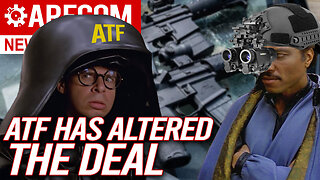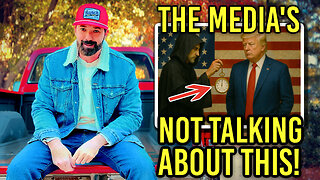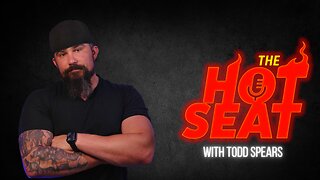Premium Only Content

#301 Business Model Framework
A business model is a conceptual framework that outlines how a company plans to create, deliver, and capture value. It describes the fundamental aspects of how a business operates, generates revenue, and sustains itself. A well-defined business model helps a company understand its customers, competitors, and the market it operates in. There are various types of business models, and a company may use one or a combination of them to achieve its goals. Here are some common business models:
Subscription Model: Customers pay a recurring fee at regular intervals (monthly, annually) to access a product or service. Examples include Netflix, Spotify, and SaaS (Software as a Service) companies like Adobe Creative Cloud.
E-commerce Model: Businesses sell products or services online through a website or platform. Examples include Amazon, eBay, and Shopify.
Freemium Model: Offers a basic version of a product or service for free while charging for premium features or additional functionality. Examples include Dropbox, Evernote, and many mobile apps.
Advertising Model: The company provides content or services for free and generates revenue by displaying ads to users. Google and Facebook are prime examples of this model.
Marketplace Model: Facilitates transactions between buyers and sellers, charging a fee or commission for each successful transaction. Examples include eBay, Airbnb, and Uber.
On-Demand Model: Provides goods or services on demand and charges customers per use. Examples include ride-sharing services like Lyft and food delivery platforms like Uber Eats.
Franchise Model: A parent company licenses its business model and brand to independent operators (franchisees) in exchange for fees or royalties. Examples include McDonald's, Subway, and Hilton.
Direct Sales Model: Products or services are sold directly to customers without intermediaries, typically through a sales force. Companies like Avon and Amway use this model.
Razor and Blade Model: The initial product is sold at a low or even a loss to drive demand for complementary products or services. For instance, printers are often sold at a low price, but ink cartridges are expensive.
Crowdsourcing Model: Leverages a community of users or contributors to create or improve products, services, or content. Wikipedia and Kickstarter are examples.
Asset-Light Model: The company doesn't own many physical assets and instead relies on partnerships, outsourcing, or renting assets. Airbnb and Uber fall into this category.
Manufacturer Model: Companies produce physical products, often at scale, and distribute them through various channels, such as wholesalers, retailers, or directly to consumers.
Nonprofit Model: Organizations focused on achieving social, environmental, or humanitarian goals may rely on donations, grants, or government funding rather than traditional profit-making.
Consulting and Service Model: Businesses provide consulting or professional services in exchange for fees. Examples include law firms, management consultants, and marketing agencies.
A successful business model aligns with a company's core competencies, target market, and competitive advantages. It should also be flexible enough to adapt to changing market conditions and customer preferences. The choice of a business model is a crucial strategic decision that impacts a company's revenue, cost structure, and overall long-term viability.
www.antharas.co.uk/ companies website or top book distributors!
-
 8:44
8:44
AV
1 year ago#1142 Press release - Guide to innovationin the NHS
13 -
 1:53:37
1:53:37
The Quartering
4 hours agoWar Declared On ICE In Chicago, Massive Allegations Against Leftist Streamer Hasan, 600,000 Chinese
120K38 -
 2:04:04
2:04:04
DeVory Darkins
5 hours agoSchumer gets NIGHTMARE NEWS from Democrats
138K49 -
 8:41
8:41
ARFCOM News
4 hours ago $0.29 earnedWill It Dremel? New V-Series Glock Pics Leaked! + ATF Alters The Deal
4.28K3 -
 LIVE
LIVE
LFA TV
20 hours agoLIVE & BREAKING NEWS! | TUESDAY 11/11/25
1,126 watching -
 LIVE
LIVE
freecastle
6 hours agoTAKE UP YOUR CROSS- For the Lord is a GOD of justice; BLESSED are all those who wait for him!
139 watching -
 2:10:12
2:10:12
Side Scrollers Podcast
6 hours agoMAJOR Hasan Allegations + Arc Raiders Review CONTROVERSY + Craig TRENDS on X + More | Side Scrollers
44.5K7 -
 5:43
5:43
Buddy Brown
6 hours ago $4.90 earnedThere's a List of WEF's "Post Trump" Predictions GOING VIRAL! | Buddy Brown
32.5K17 -
 1:43:59
1:43:59
The HotSeat With Todd Spears
3 hours agoEP 207: Have YOU earned THEIR Sacrifice??
14.8K4 -
![[Ep 789] Republicans Turn “Clean CR” Into Hemp Ban | 50 Year Mortgage: Game Changer](https://1a-1791.com/video/fwe2/ce/s8/1/E/2/P/y/E2Pyz.0kob-small-Ep-789-Republicans-Turn-Cle.jpg) LIVE
LIVE
The Nunn Report - w/ Dan Nunn
3 hours ago[Ep 789] Republicans Turn “Clean CR” Into Hemp Ban | 50 Year Mortgage: Game Changer
152 watching